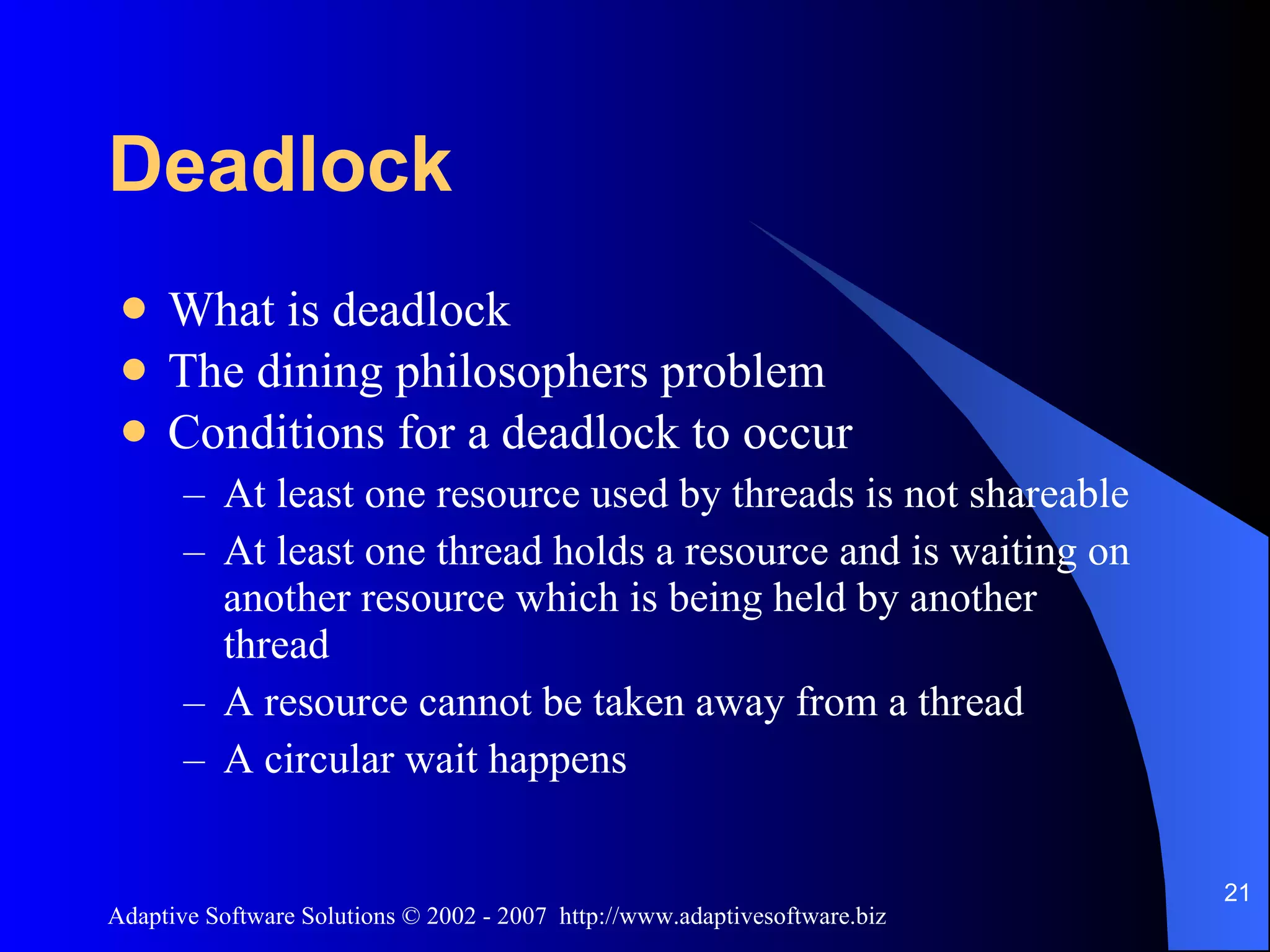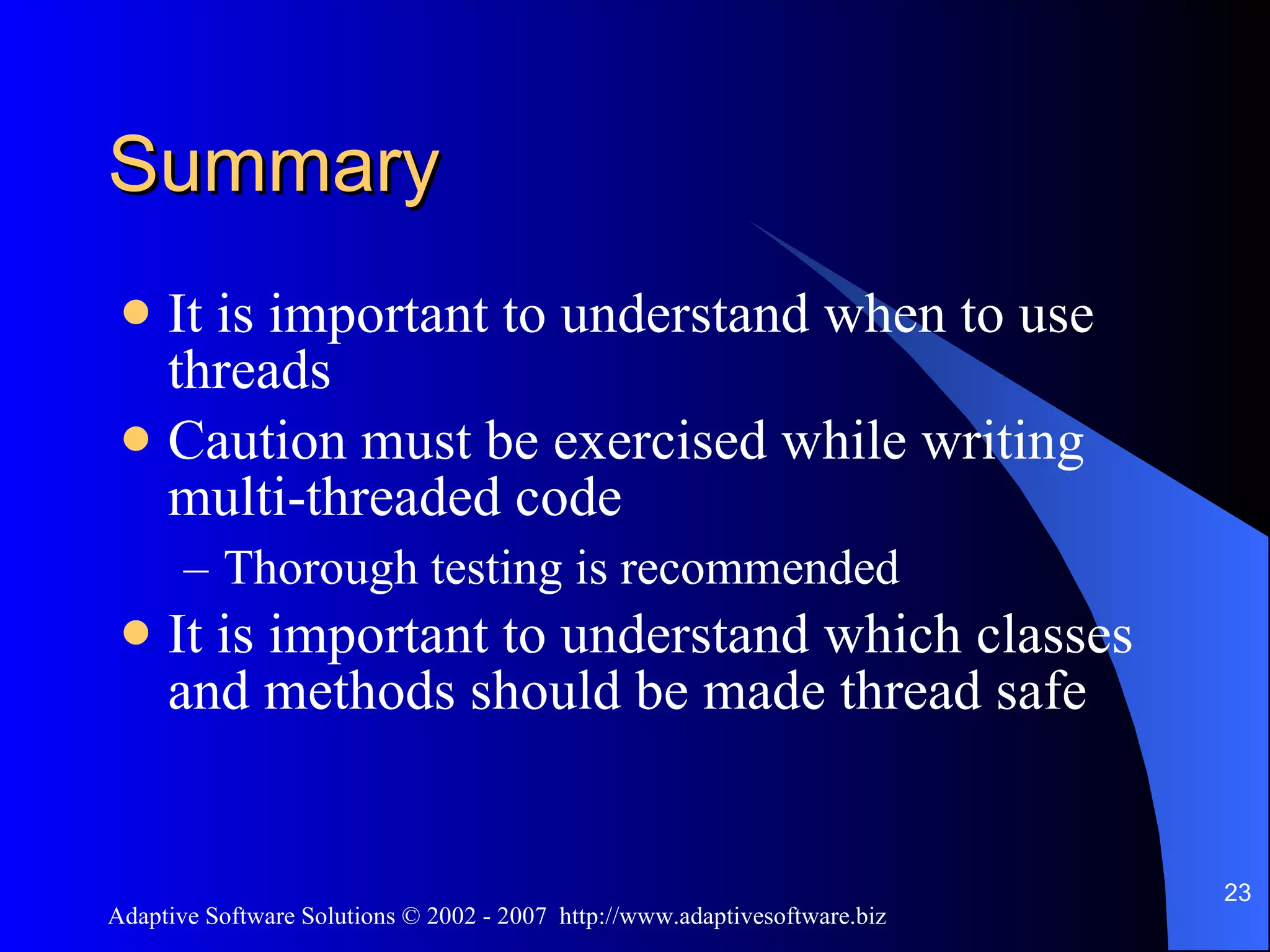The document discusses multithreading concepts like concurrency and threading, how to create and control threads including setting priorities and states, and how to safely share resources between threads using synchronization, locks, and wait/notify methods to avoid issues like deadlocks. It also covers deprecated thread methods and increased threading support in JDK 1.5.

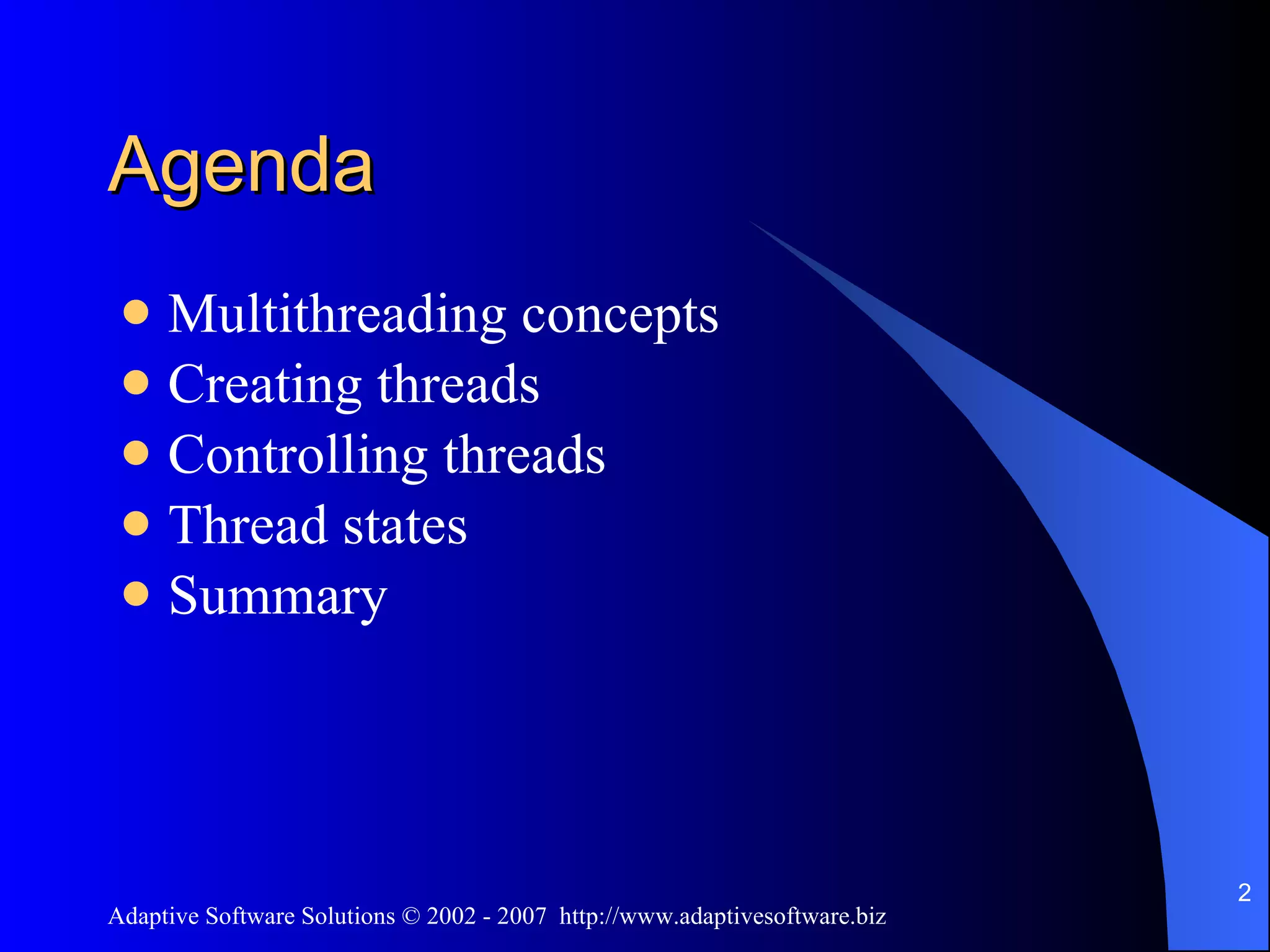
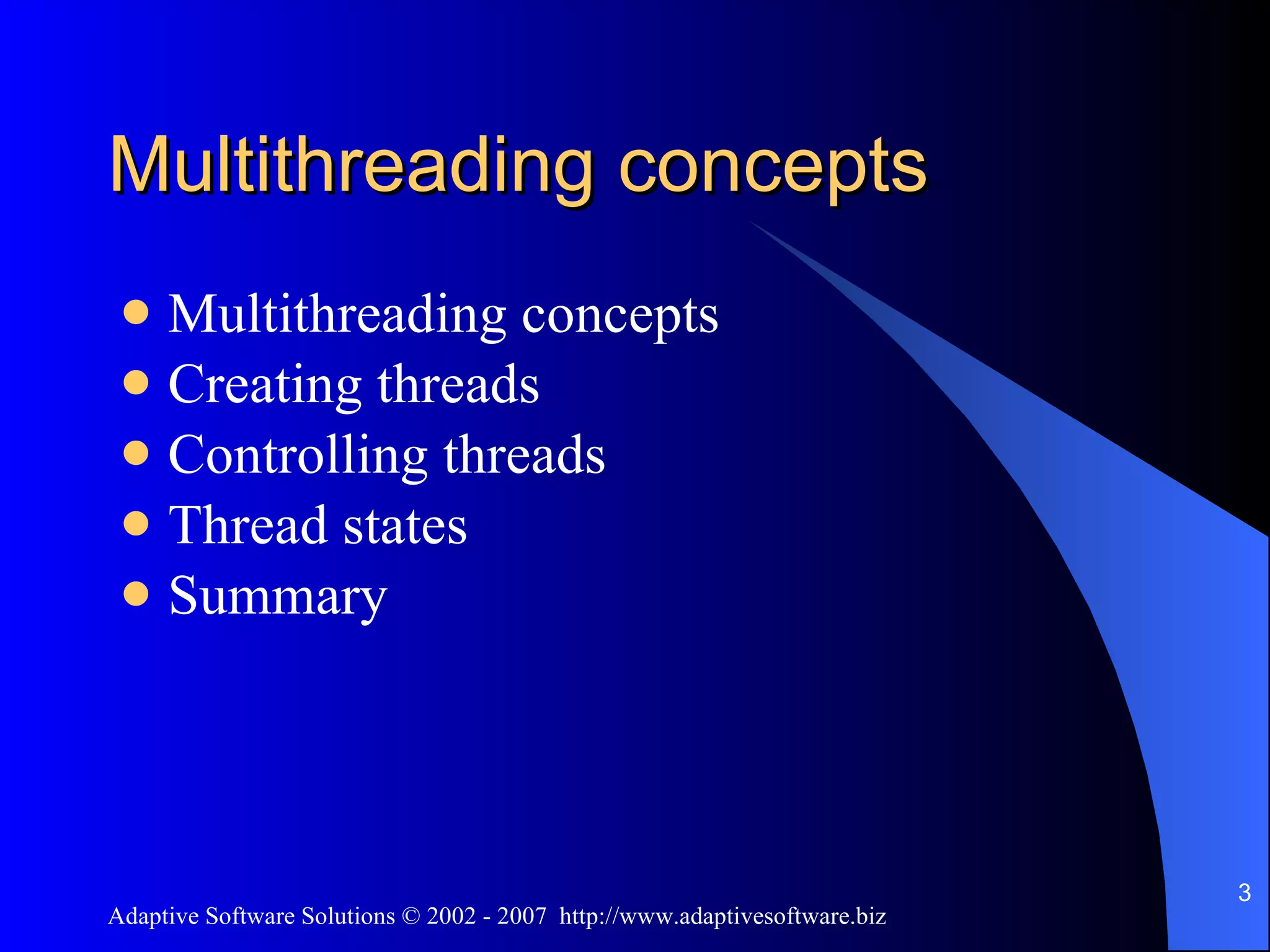

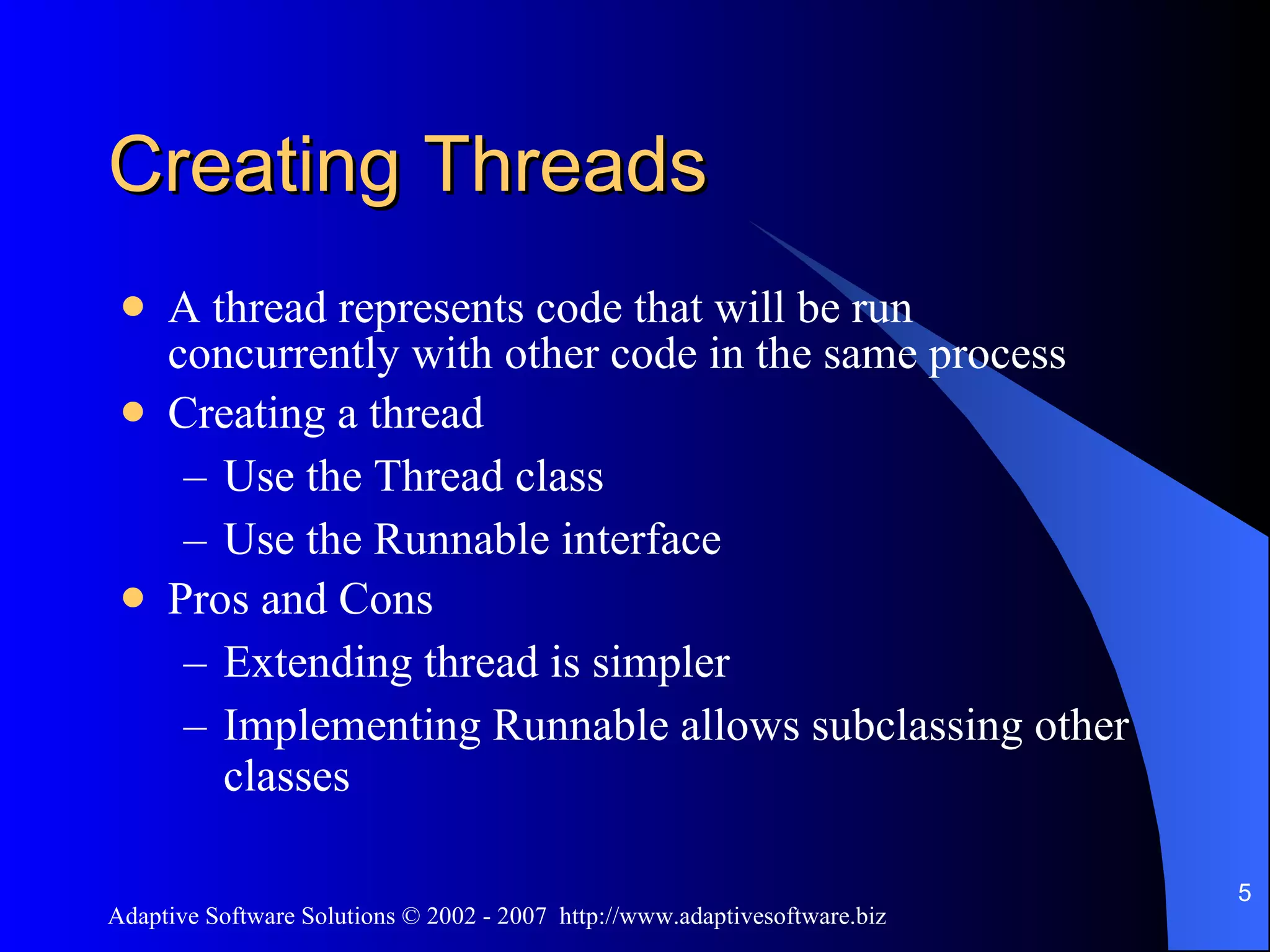
![Creating Threads – Extending Thread Extend java.lang.Thread Implement the run method See [SimpleThread.java]](https://image.slidesharecdn.com/multithreading-in-java-11820/75/Multithreading-In-Java-6-2048.jpg)
![Creating Threads – Implementing Runnable Extend java.lang.Thread Implement the run mthod See [SimpleRunnable.java] A Runnable cannot throw a checked exception](https://image.slidesharecdn.com/multithreading-in-java-11820/75/Multithreading-In-Java-7-2048.jpg)
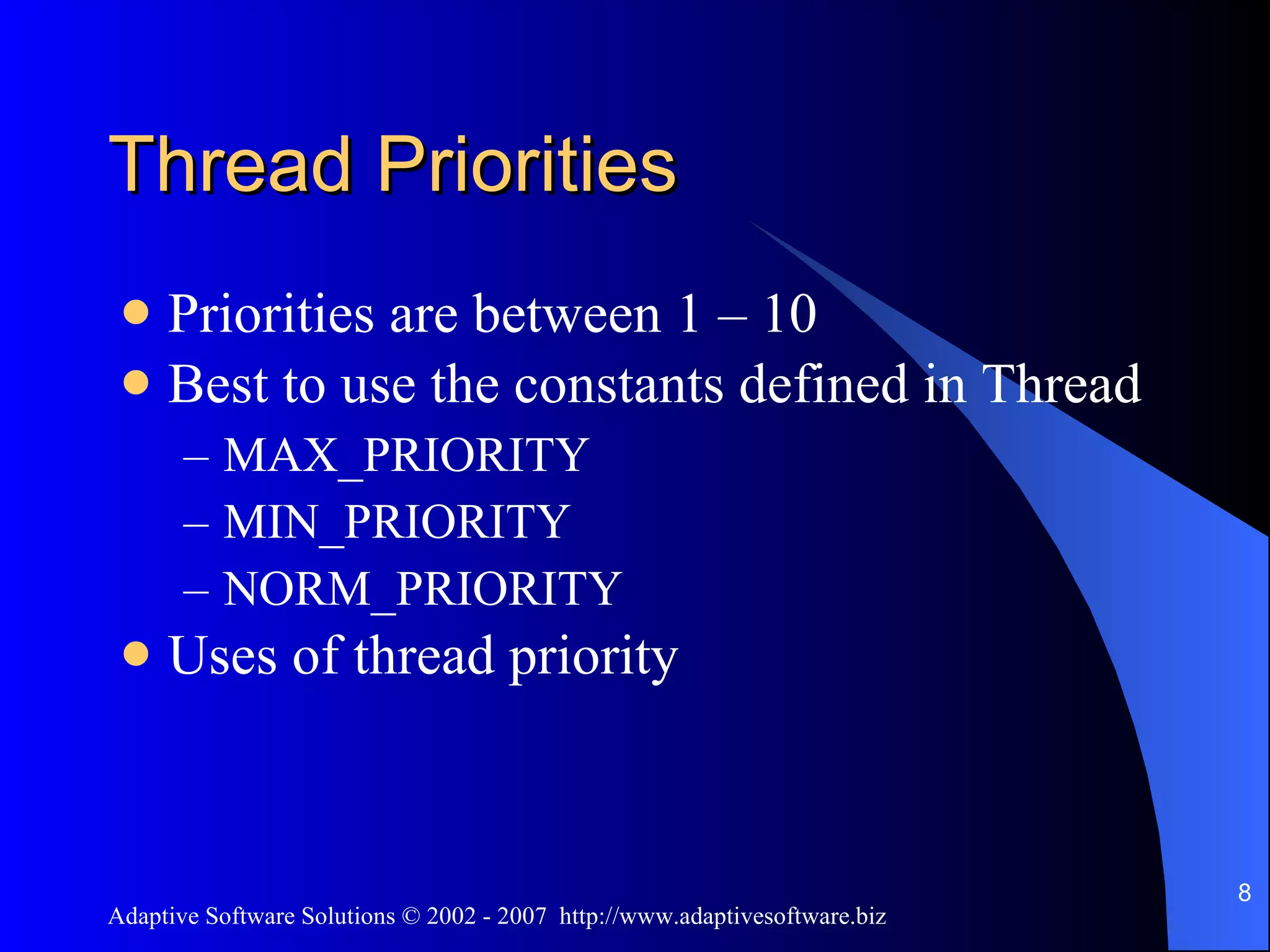
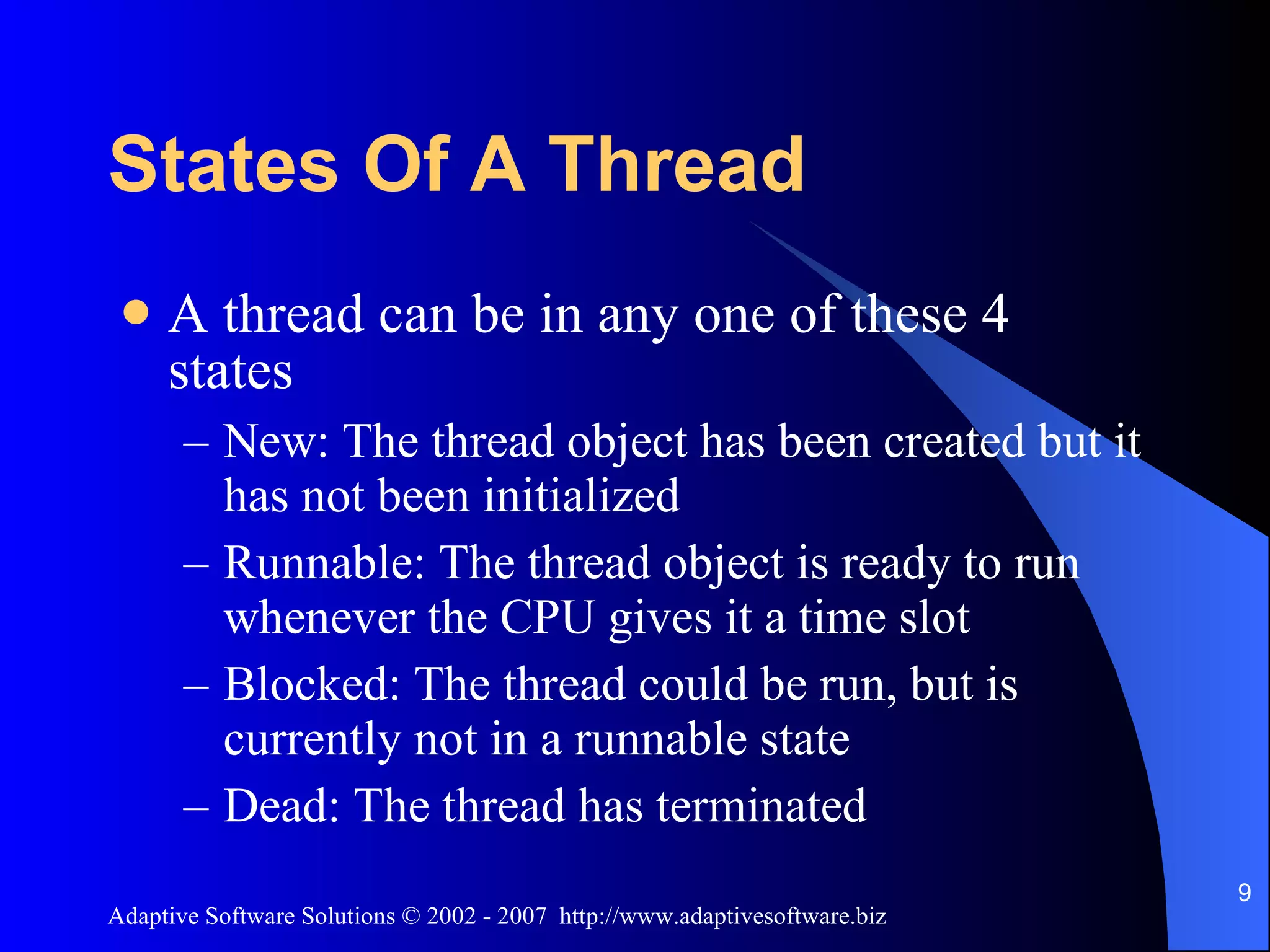
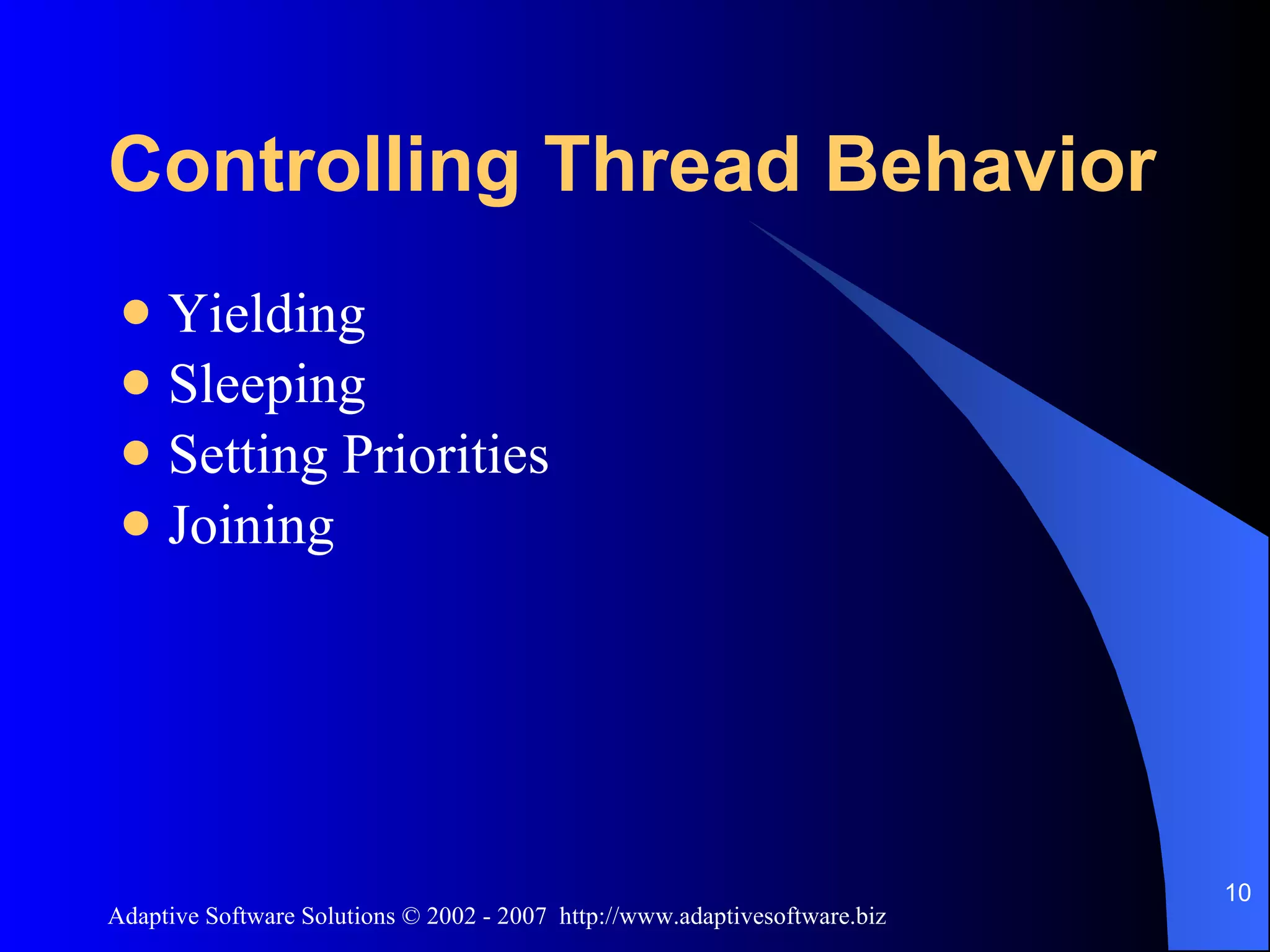
![Controlling Thread Behavior Yielding A thread can be made to yield when it comes to a point when the CPU can be relinquished to another thread Yielding is done by calling the yield() method A call to yield() is a hint to the underlying operating system. It does not guarantee that the CPU will be immediately given to another thread See [SimpleYieldingThread.java]](https://image.slidesharecdn.com/multithreading-in-java-11820/75/Multithreading-In-Java-11-2048.jpg)
![Controlling Thread Behavior Sleeping A thread can be put to sleep for xxx ms Use the sleep(long x) call on the thread to put it to sleep for x ms The thread is guaranteed to sleep for x ms It may take more than that for the scheduler to give it control It may be interrupted by another thread See [SimpleThread.java]](https://image.slidesharecdn.com/multithreading-in-java-11820/75/Multithreading-In-Java-12-2048.jpg)
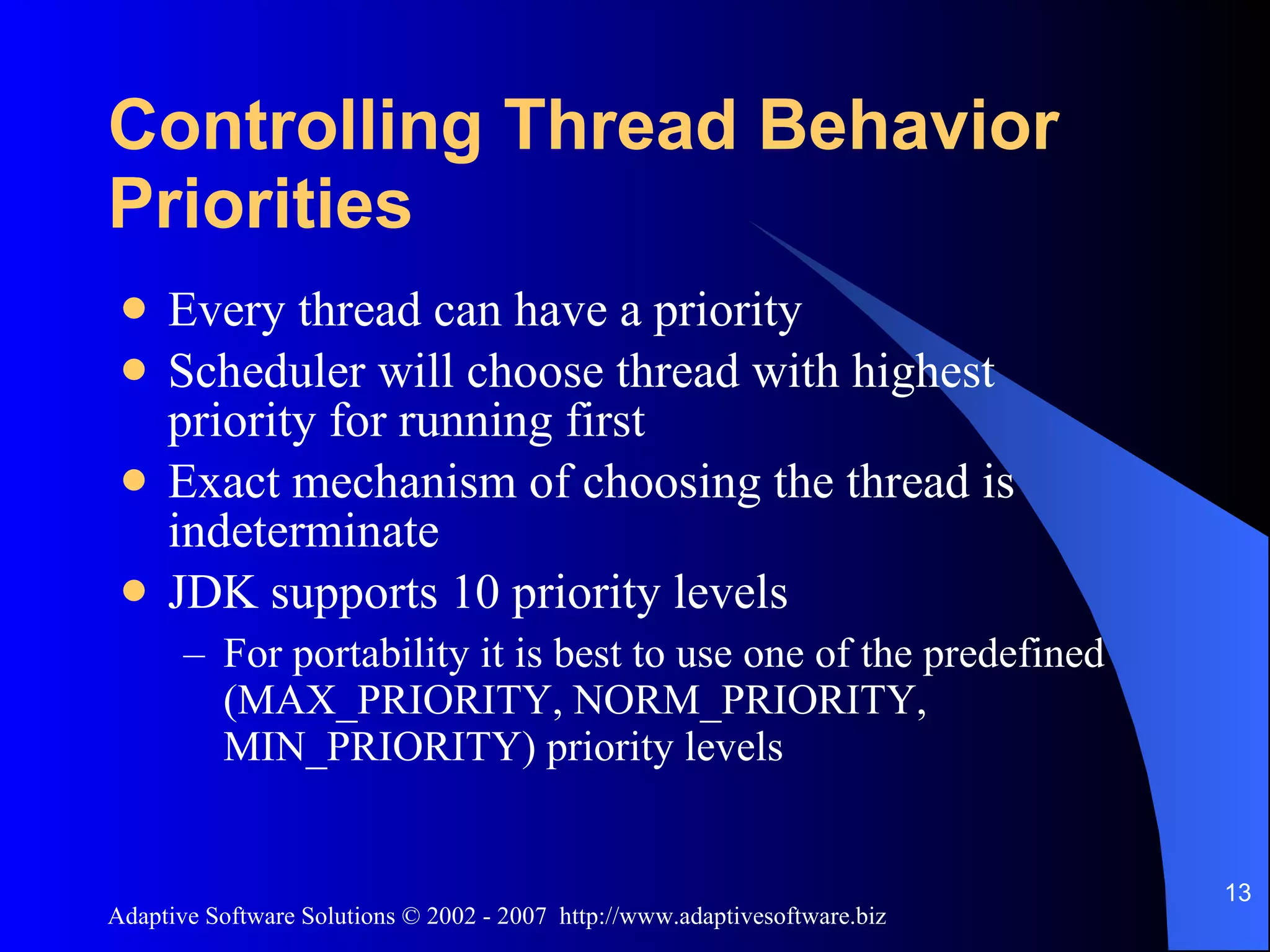

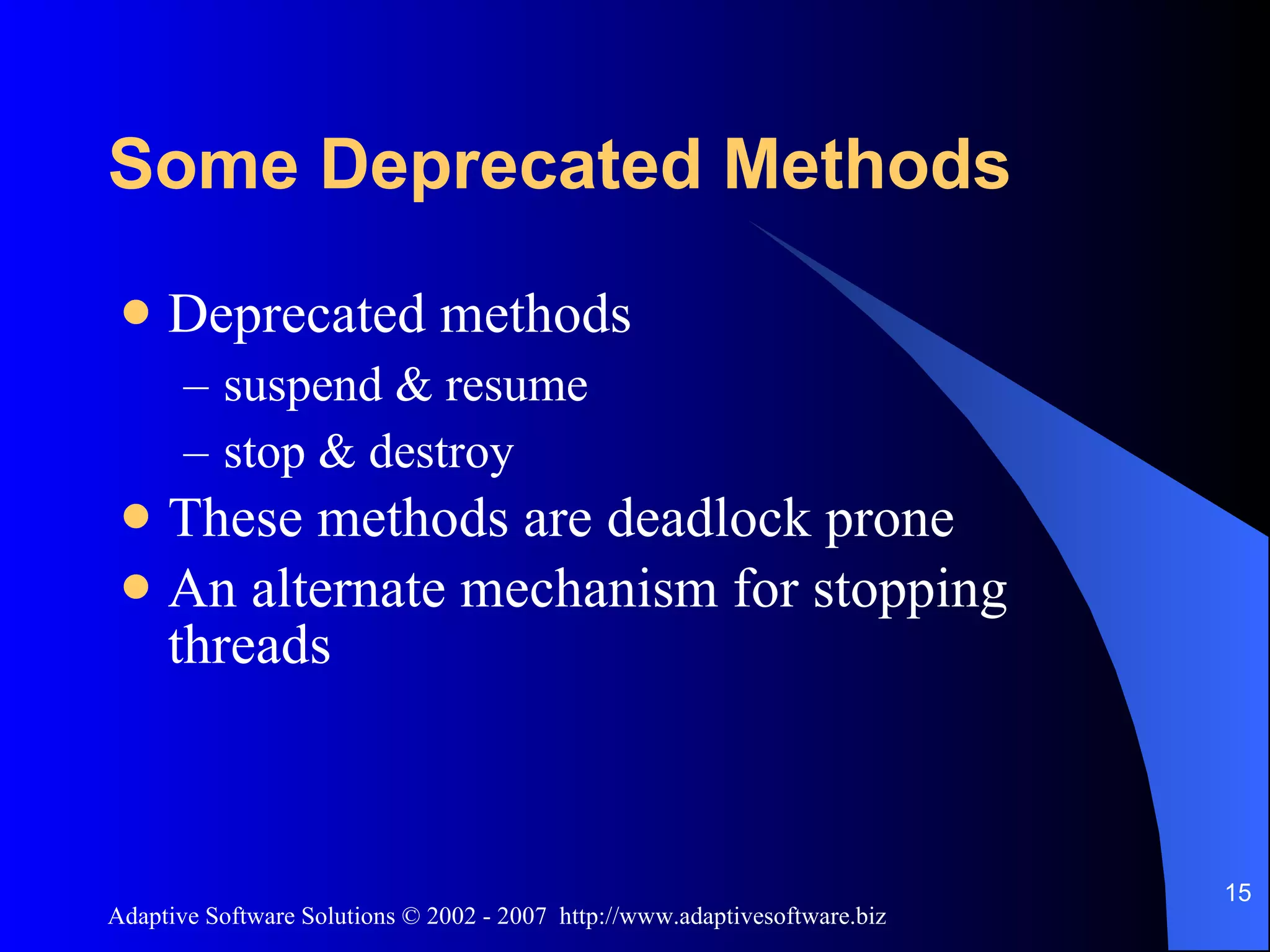
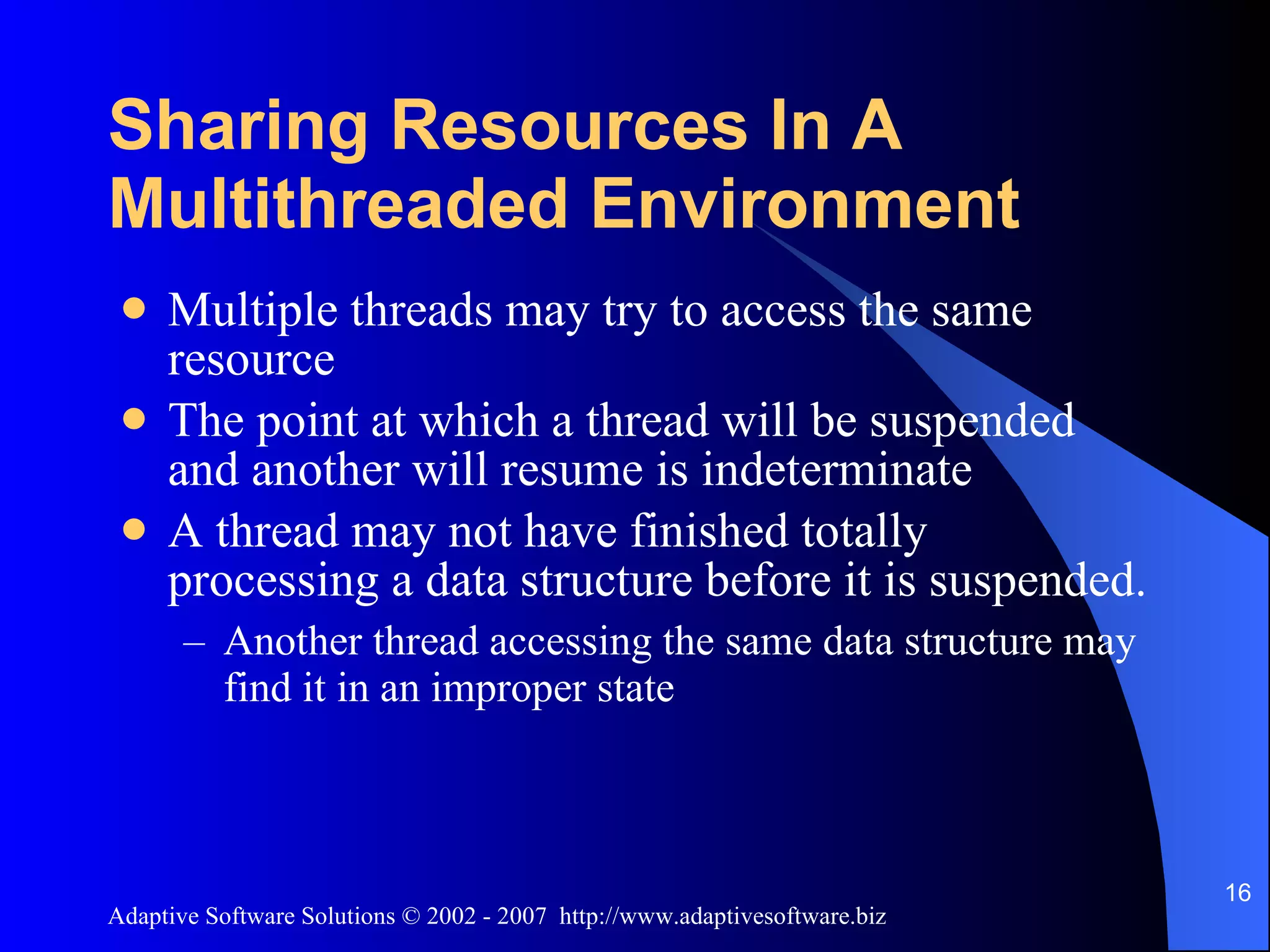
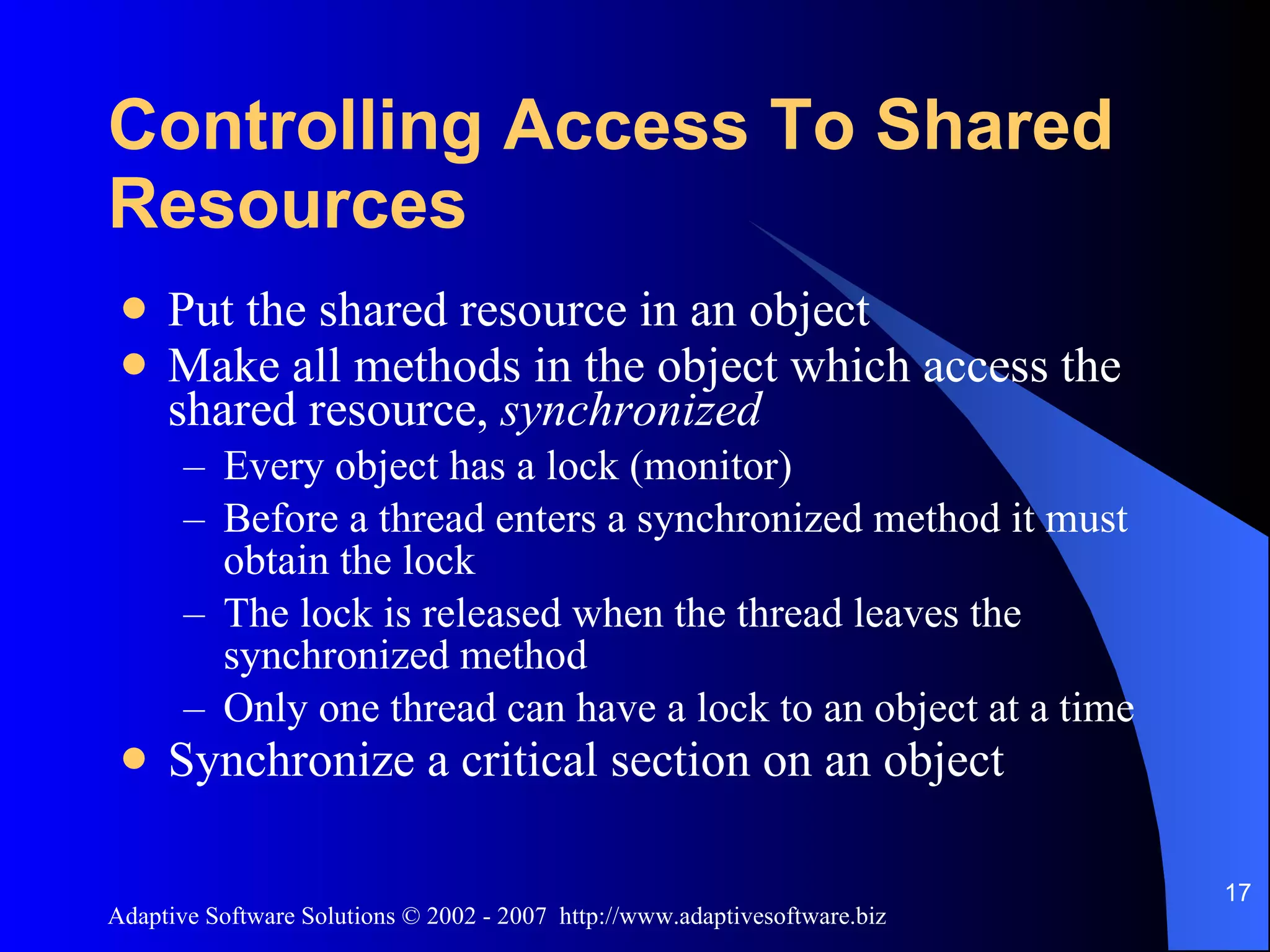
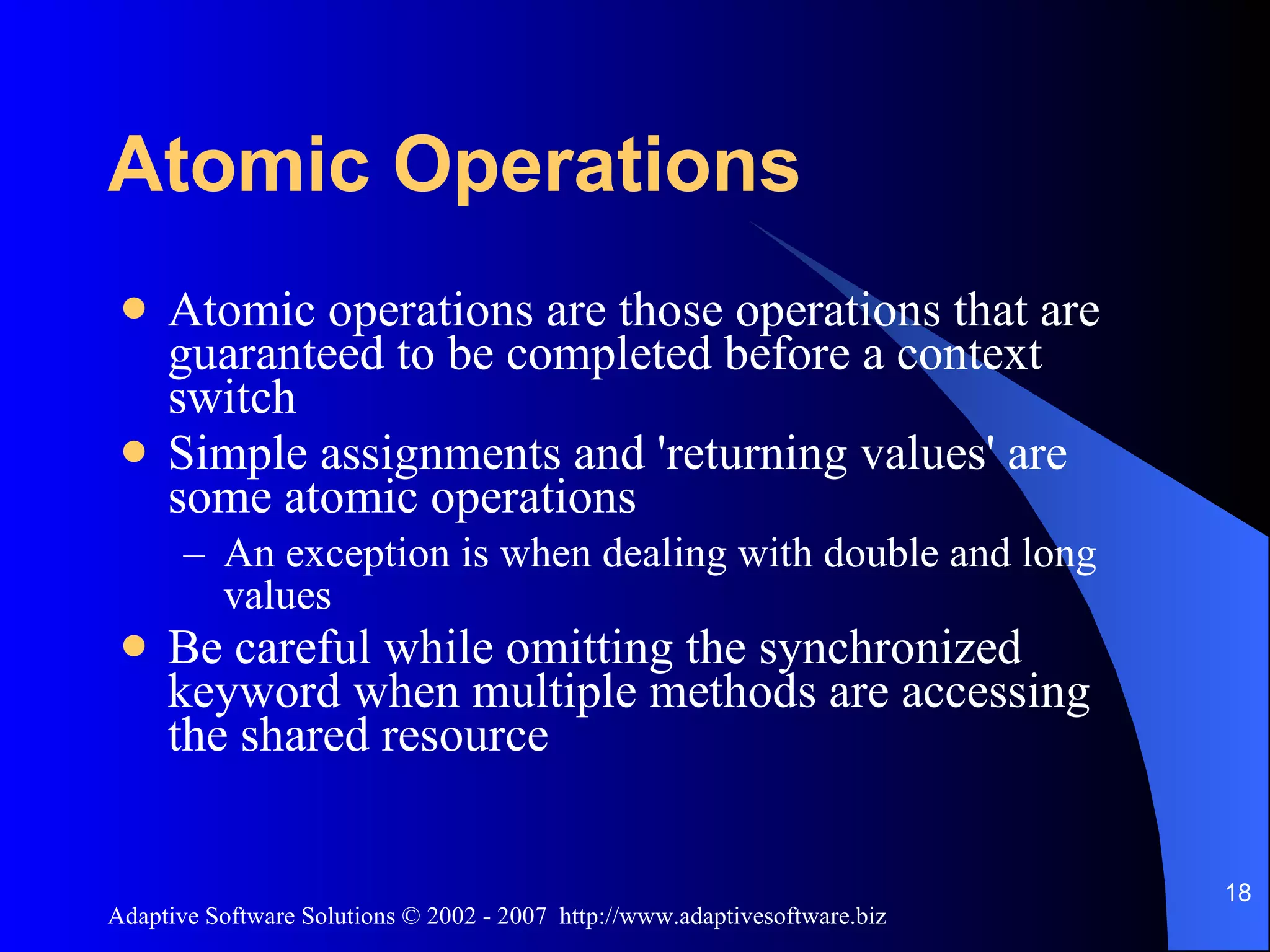
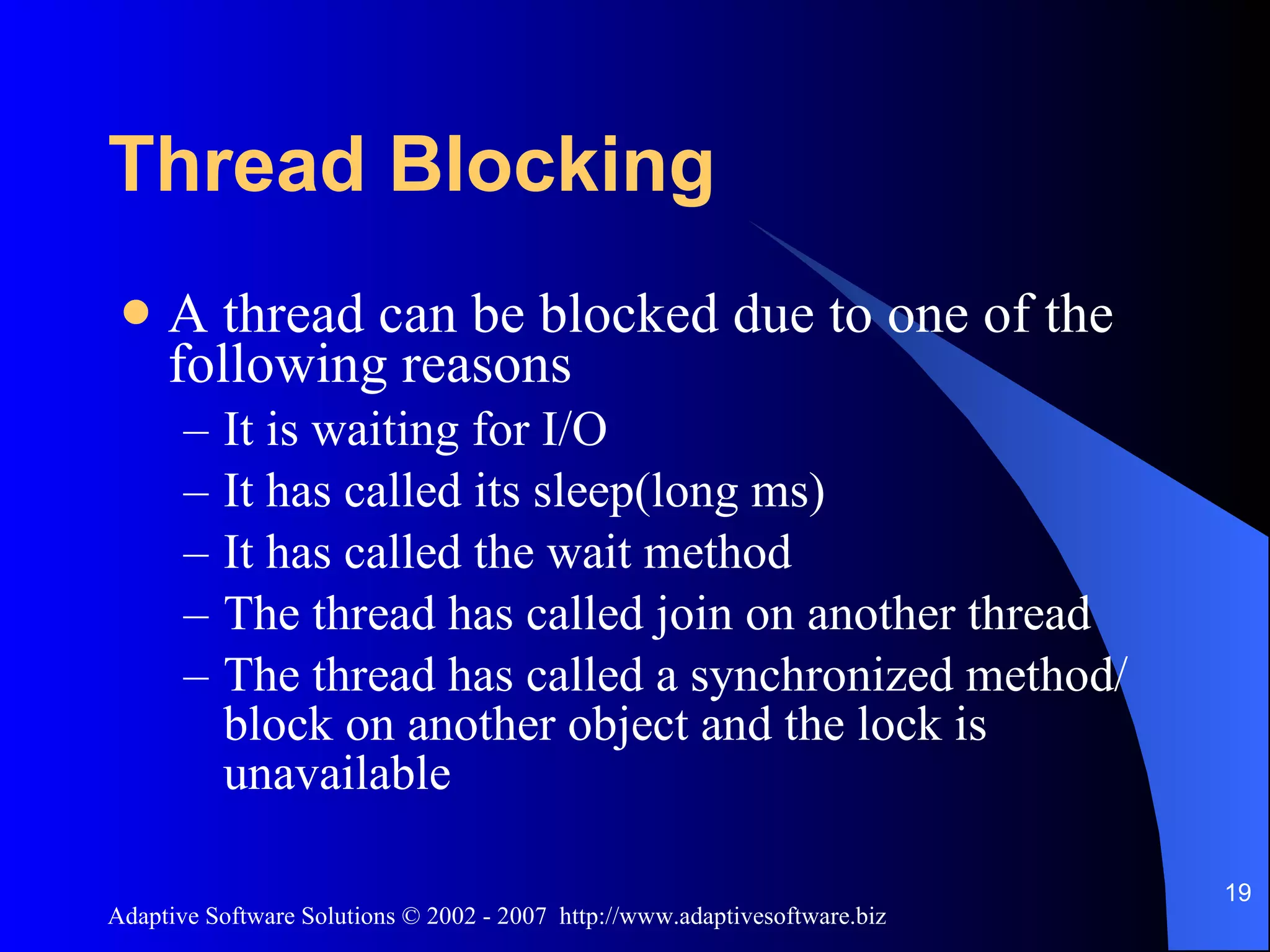
![Using wait() and notify() with threads sleep(long ms) does not release the locks held by that thread Use wait() with notify() or notifyAll() instead See [WaitNotifyThread.java]](https://image.slidesharecdn.com/multithreading-in-java-11820/75/Multithreading-In-Java-20-2048.jpg)
